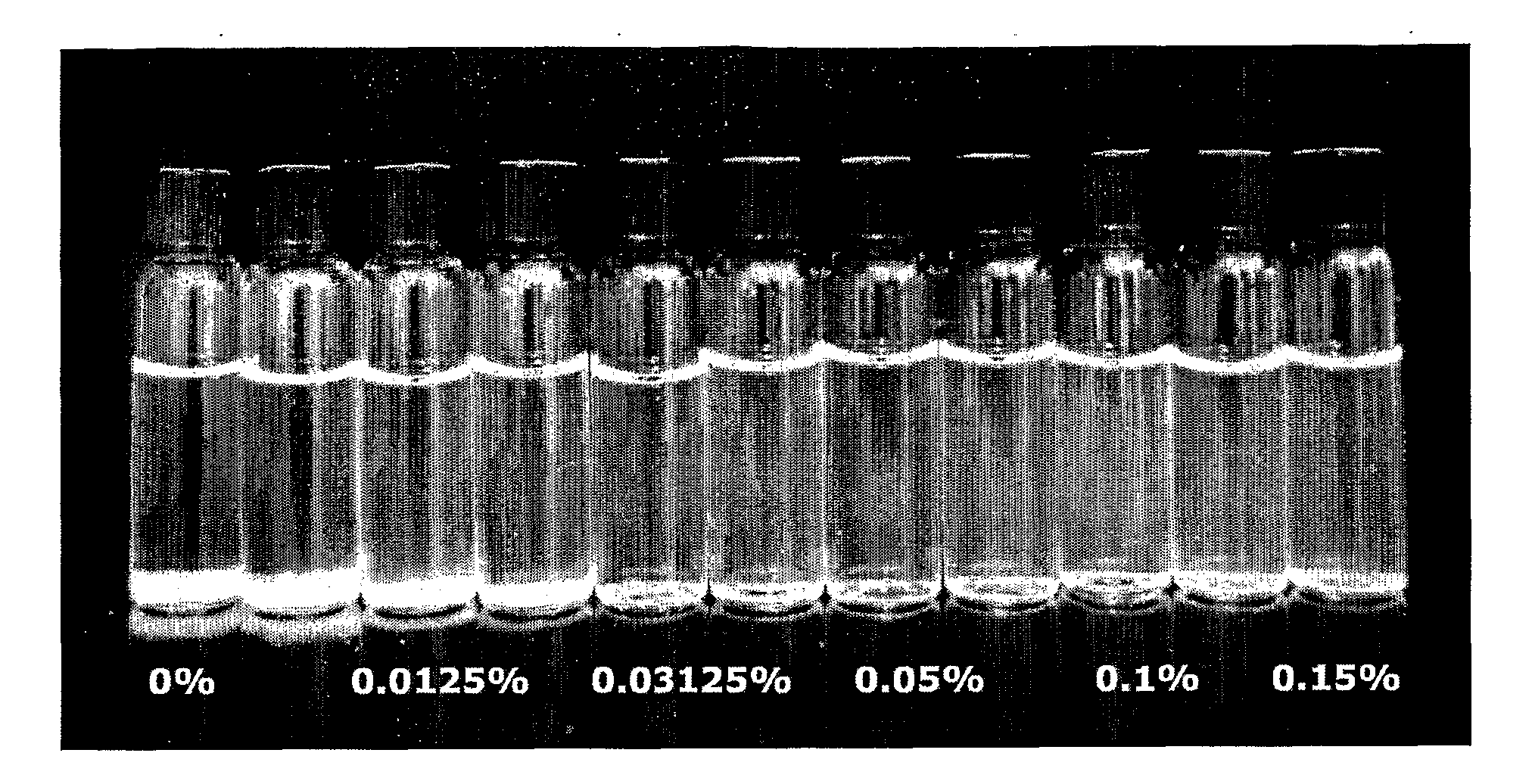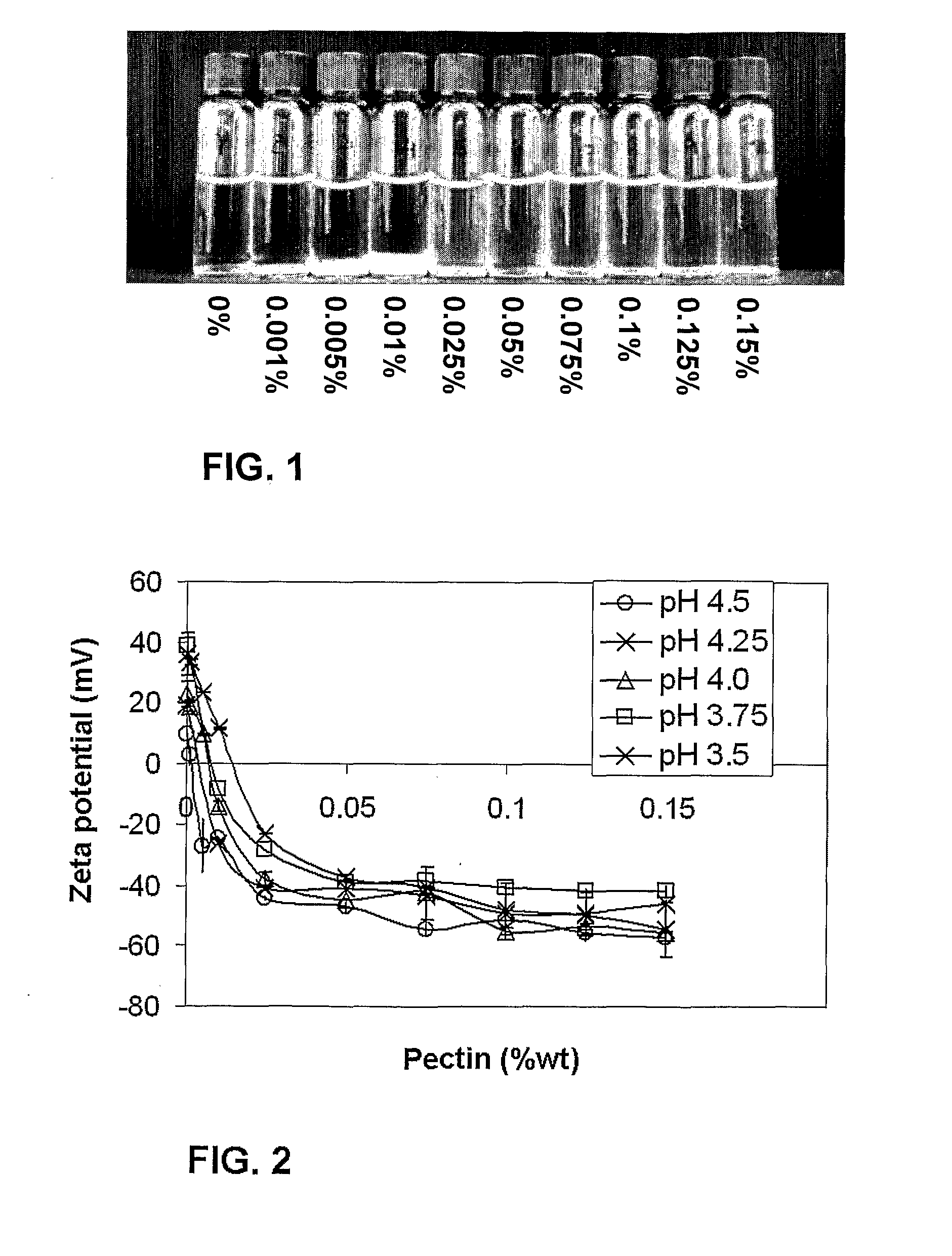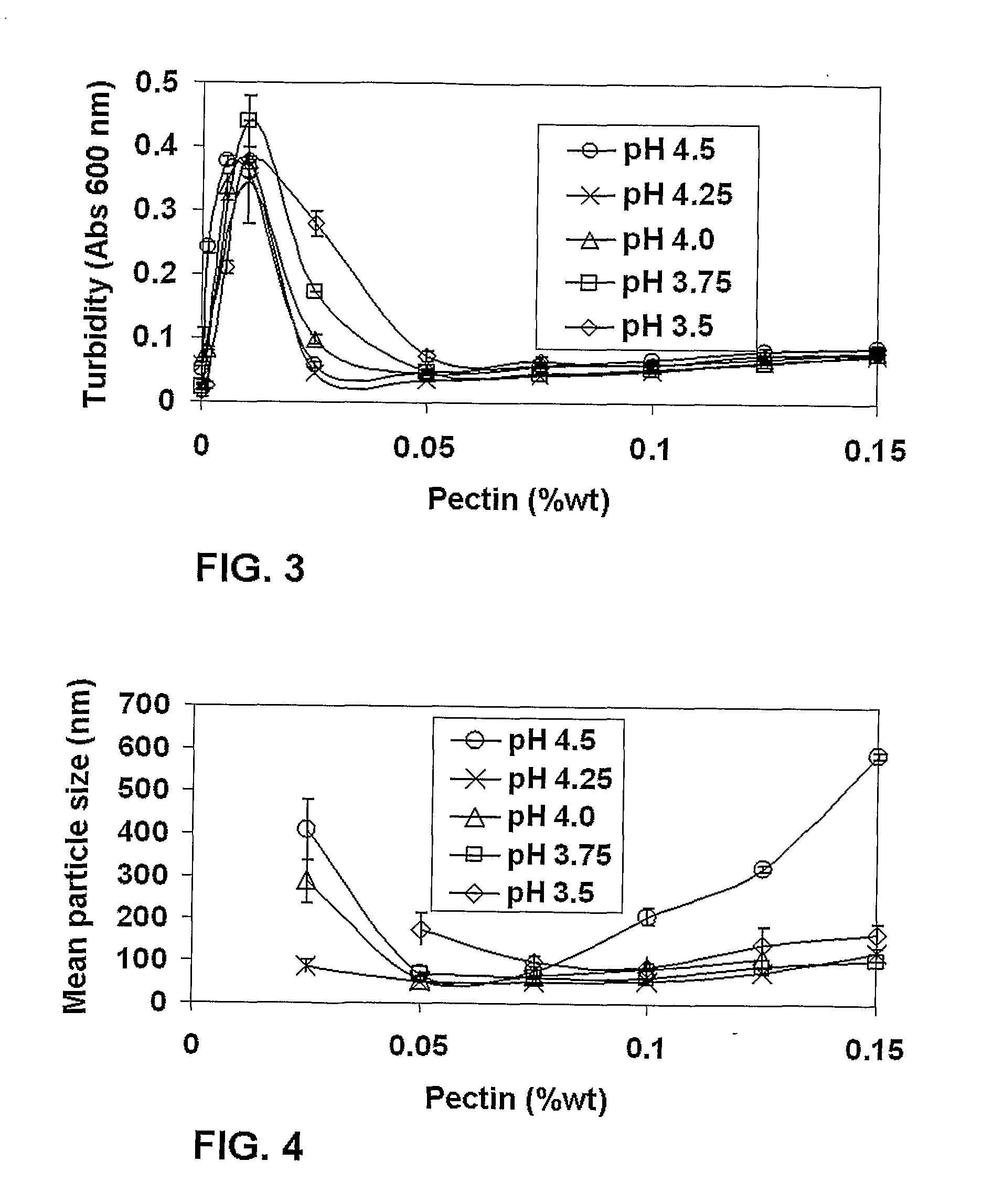Beta-lactoglobulin-polysaccharide nanoparticles for hydrophobic bioactive compounds
- Summary
- Abstract
- Description
- Claims
- Application Information
AI Technical Summary
Benefits of technology
Problems solved by technology
Method used
Image
Examples
example 1
β-Lactoglobulin-Pectin Electrostatic Complex Formation
[0124]A series of solutions containing a constant protein concentration (0.05% wt) and varying pectin concentrations (0-0.15% wt) were prepared by adding different amounts of 0.2% wt stock polysaccharide solution to the protein solution. These solutions were titrated to the desired pH, using HCl, than stirred for 1 hr and stored overnight at room temperature prior to analysis.
[0125]FIG. 1 shows the visual sedimentation observation results, 24 hrs after mixing the biopolymer solutions and slowly adjusting the pH to 4.0 while stirring. β-lactoglobulin concentration was 0.05%. The results of the ratio scan at pH 4.0 indicated that when β-lactoglobulin concentration was kept constant at 0.05% wt, the pectin percentage range that provided the desired properties of transparency and stability was above 0.025% wt pectin (FIG. 1-3). As pectin concentration was increased from 0.001 to 0.01% wt, more and more coacervation occurred (i.e. neu...
example 2
The Effect of pH on Particle Size and Turbidity of β-Lactoglobulin-Pectin Complexes
[0126]The effect of pH on particle size and turbidity was studied in the range 3.5≦pH≦4.5. Pectin concentrations were maintained within the range used in Example 1. FIG. 3 shows the influence of pectin concentration on turbidity of 0.05 wt β-lactoglobulin solution at the studied pH range. The effect of pH on turbidity was most notable between 0.001 and 0.05% wt pectin. In this range, as the pH increased from 3.5 to 4.25 the turbidity decreased. FIG. 4 shows that for most pH values, size was minimal between 0.05% and 0.075% pectin. Table 1 shows the minimal mean particle size of the β-lactoglobulin-pectin complexes at the different pH studied and the pectin concentration at these minima. The smallest mean particle size, 49 nm, was obtained at pH 4.25, and 0.075% wt pectin. Interestingly, at pH 4.5, closest to the pI of the protein, particle size was most strongly dependent on pectin concentration. When...
example 3
Encapsulation of Vitamin D2 in β-Lactoglobulin-Pectin Complexes and Effect on Particle Size
[0127]Incorporation of vitamin D2, as an exemplary fat-soluble vitamin, into β-lactoglobulin-pectin complexes necessitated binding vitamin D2 to β-lactoglobulin prior to pectin addition. The vitamin was dissolved in absolute ethanol. A 276 μL aliquot of a 5 mg mL−1 solution of vitamin D2 in absolute ethanol was added, while stirring, to 100 mL of 0.2% wt β-lactoglobulin solution at pH≈6.8, then stirred further for 30 minutes. Pectin solution was then added to the β-lactoglobulin-vitamin D2 solution to final concentrations of 0.05% wt protein and 0.1% wt pectin, and the pH was adjusted to 4.0. The samples were stirred further for an hour. FIG. 6 shows the particle size distributions of: 0.05% wt β-Lg only; vitamin D (0.027 mM) only; complexes made with 0.05% wt β-Lg, 0.05% wt pectin and vitamin D (0.027 mM) and complexes of 0.05% wt β-Lg and pectin 0.05% wt (without the vitamin). All of the sys...
PUM
| Property | Measurement | Unit |
|---|---|---|
| Temperature | aaaaa | aaaaa |
| Fraction | aaaaa | aaaaa |
| Diameter | aaaaa | aaaaa |
Abstract
Description
Claims
Application Information
 Login to View More
Login to View More - R&D
- Intellectual Property
- Life Sciences
- Materials
- Tech Scout
- Unparalleled Data Quality
- Higher Quality Content
- 60% Fewer Hallucinations
Browse by: Latest US Patents, China's latest patents, Technical Efficacy Thesaurus, Application Domain, Technology Topic, Popular Technical Reports.
© 2025 PatSnap. All rights reserved.Legal|Privacy policy|Modern Slavery Act Transparency Statement|Sitemap|About US| Contact US: help@patsnap.com



